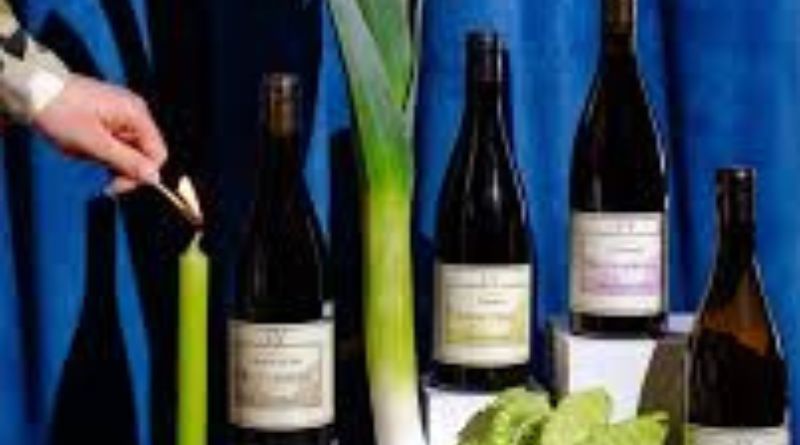When most people think about wine, they focus on the flavor, the grapes, or maybe the winery it came from. But there’s something else that plays a huge role—and it’s not the kind of thing people usually talk about. It’s the bottle. Yeah, the actual glass bottle holding the wine. Believe it or not, that bottle does way more than just keep the liquid inside.
From how a wine feels in your hand to how it looks on a shelf, the bottle does a lot of quiet work behind the scenes. And once you start noticing it, you realize it’s not just a random choice. The size, shape, weight, and even the type of glass are all part of the story. Let’s break it down in a way that makes sense without getting too complicated.
First Impressions Start with the Bottle
Think about standing in front of a bunch of wine bottles in a store. Some are tall and slim, others short and wide. Some are green, some are clear. You haven’t even tasted the wine, but you already have thoughts about it. That’s because the bottle is doing what it’s designed to do—grab your attention and give you a feel for what’s inside.
For wine brands, this really matters. A fancy-looking bottle can make someone believe the wine is high quality, even if they’ve never heard of the brand before. A heavier bottle with a deep indentation in the bottom—called a punt—might feel more expensive. That’s not an accident. That’s design at work.
Good wine brands usually don’t just grab any old bottle and fill it up. They work with glass bottle makers who understand how to create something that fits their brand’s look and feel. It’s not just about holding the wine—it’s about showing it off in the best way possible.
Bottle Shapes Are a Whole Thing
There’s a reason why not all wine bottles look the same. Different shapes actually tell you something about the wine inside, even if you don’t know much about wine. Here are some of the common ones:
- Bordeaux bottles are straight and tall with high shoulders. You’ll often find red wines like Cabernet Sauvignon or Merlot in these.
- Burgundy bottles are curvier with sloping shoulders. These usually hold Pinot Noir or Chardonnay.
- Champagne bottles are thicker and heavier to handle the pressure from bubbles.
These shapes aren’t just for looks. The way the bottle is built can help protect the wine, especially during shipping or long storage. For example, the thickness of a Champagne bottle keeps it from breaking because of the pressure inside.
Glass Color Isn’t Just a Style Choice
The color of the glass also matters. Dark green or brown glass helps protect the wine from sunlight. Light messes with wine, especially white or sparkling kinds. That’s why you rarely see white wine in clear glass unless it’s meant to be drunk quickly.
Some winemakers do choose clear bottles for looks—maybe to show off a pretty rosé or a golden Chardonnay. But when they do that, they know they’re giving up some protection from light. So they might use special packaging or recommend storing the wine in a darker place.
Weight Can Trick Your Brain
Here’s something interesting. Heavier bottles often make people think the wine inside is more special. There’s no actual rule that says a heavier bottle means better wine, but a lot of people feel that way. It’s kind of like how a phone that feels solid in your hand seems more expensive.
This is why some high-end wines are packaged in super thick glass. It’s all about the feeling. But there’s also a downside: heavier bottles cost more to ship and aren’t as eco-friendly. Some wineries are now trying to balance that by using smart designs that feel high-quality but don’t waste material.
Labels and Bottles Work Together
A wine label does a lot of talking, but it only works well if the bottle makes sense with it. Imagine a sleek, modern label on a stubby, old-fashioned bottle. It might feel weird, right? That’s because people expect the whole package to match. The shape and color of the bottle should line up with the design and tone of the label.
Wineries usually think about this early on. They test how different label designs look on different bottles before picking one. That way, everything from the bottle shape to the text style feels like it belongs together.
It’s Not Just Marketing—It’s Function Too
While looks are important, bottles also have a job to do. They have to keep the wine safe. That means sealing tightly, protecting from light, and not messing with the flavor. Glass is great at this because it doesn’t react with the wine.
Plastic or aluminum might be lighter, but they can affect taste or let in air. That’s why glass is still the go-to material for wine bottles. It’s strong, reliable, and doesn’t mess things up.
Bottle Choices Matter More Than You’d Think
Picking the right bottle isn’t just about looking cool on a shelf. It affects storage, shipping, and even how people feel about the wine before tasting it. If a winery chooses a cheap-feeling bottle, some people might think the wine inside is cheap too—even if it’s actually great.
On the other hand, a well-designed bottle can help a small winery stand out in a crowded market. It can catch someone’s eye, make a good impression, and tell a little story before the first sip.
The Takeaway
The next time you see a bottle of wine, look closer. There’s a lot going on before you even pull the cork. The shape, weight, glass color, and label design all work together to set a tone. It’s not just glass—it’s the first thing you notice, the thing you hold, and part of the whole wine experience.
So while most people focus on what’s inside the bottle, the bottle itself deserves some credit. It protects the wine, helps it stand out, and makes you feel something before you even taste a drop.
And honestly? That’s kind of amazing for something most people don’t even think about.






